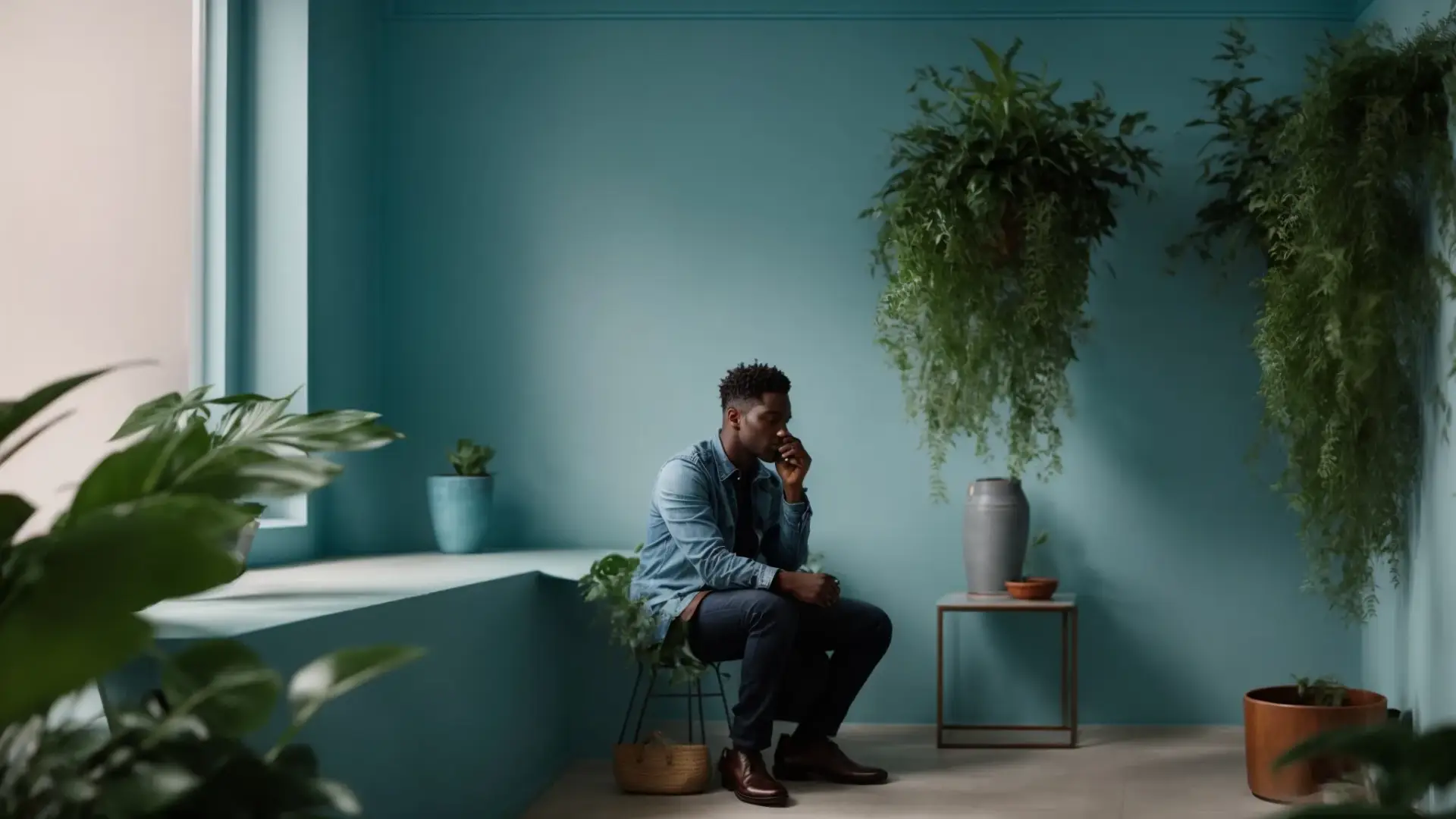
Navigating Anxiety With Cognitive Behavioral Therapy Techniques
Anxiety—it’s like a shadow that follows you, unpredictable and often overwhelming.
At Equinox Therapeutics and Consulting Services, we’ve seen firsthand the difference that cognitive behavioral therapy (CBT) techniques can make.
These strategies are not about pushing anxiety away but rather understanding its roots, thereby disarming its power over you.
From thought records to exposure therapy, this approach offers practical tools for anyone looking to find relief from anxiety’s grip.
Keep reading to discover how these techniques can guide you toward a more balanced and anxiety-free life.
Understanding the Basics of Cognitive Behavioral Therapy
At the heart of battling anxiety lies a powerful strategy – Cognitive Behavioral Therapy (CBT).
It’s like having a map when you’re lost in the woods of your thoughts.
CBT unfolds the principle that how we think, feel, and act are interconnected, meaning change in one aspect can lead to positive changes in others.
To ease anxiety, understanding and leveraging these core principles of CBT can be a game changer.
It’s all about identifying those patterns that lock you in a cycle of anxiety and learning the skills to break free.
So, let’s roll up our sleeves and see how CBT addresses this common but crippling condition.
Exploring the Core Principles of CBT
Exploring the core principles of counseling Cognitive Behavioral Therapy (CBT) is like getting into the driver’s seat of your mind. It’s about pinpointing those thought patterns that cause a spiral and tweaking them gently towards the positive. The magic lies in understanding that our thoughts, feelings, and behaviors are tightly knit together, and changing one can significantly affect the others.
In essence, CBT is not just about talking things out; it’s a hands-on approach to deal with major depressive disorder. It arms folks with practical techniques to challenge and change cognitive distortion thoughts and behaviors. This is crucial, as it helps individuals not just in moments of panic, but in sculpting a life where anxiety doesn’t hold the reins.
Identifying How CBT Addresses Anxiety
Anxiety often feels like a relentless wave, crashing over you without warning. Cognitive Behavioral Therapy (CBT) steps in as a lifeline, teaching individuals how to swim against these tides by identifying and reconfiguring the underlying thought patterns that often trigger anxiety. It’s about getting to the root of the problem and pulling it out, weed by weed.
Within the nurturing walls of Equinox Therapeutics and Consulting Services, clients discover how their thinking patterns, which evolved over the years, have been the hidden culprits behind their anxiety. By applying cognitive restructuring techniques, they learn to challenge these thoughts, to question their validity, and gradually replace them with more balanced and less frightening perspectives. It’s like shining a light in dark corners where anxiety lurks, making the monsters there less daunting.
The Role of Thought Records in Managing Anxiety
Jumping into the world of managing anxiety, one technique stands out for its simplicity yet profound impact – thought records.
This tactic in cognitive behavioral therapy isn’t just about jotting down what you had for breakfast; it’s a strategic tool aimed at dissecting and understanding the whirlwind of thoughts that contribute to anxiety.
Thought records act as the bridge between recognizing those sneaky, negative thought patterns and challenging them head-on, paving the way for a new perspective on old fears.
So, let’s get down to the nitty-gritty of tracking your internal dialogue and transforming those thoughts from anxiety-inducing to empowering allies in your fight against anxiety.
Learning to Track Your Thoughts Accurately
Learning to track your thoughts accurately is kind of like turning on the GPS when you’re navigating through a maze of city streets. The goal here is to pinpoint exactly where you are-but instead of physical location, it’s about mapping your mental state with cognitive restructuring. It starts with recognizing when your thoughts take a turn down Anxiety Lane and keeping a detailed log of those moments.
Getting good at this requires a bit of detective work on your part. It’s about observing your thoughts like clouds passing in the sky, noting their shape, speed, and direction without getting swept up in the storm. This practice lays the groundwork for identifying patterns and triggers related to emotion, essentially giving you a clearer picture of what’s feeding your anxiety in the first place.
Challenging Negative Thought Patterns Effectively
Once you’ve gotten a grip on your thought patterns through cognitive restructuring, the next step is showing those negative thoughts who’s boss. It’s about disputing irrational beliefs and convincing your mind that the worst-case scenario isn’t the only outcome. Think of it as standing up to a bully in your head, reaffirming that you’re in control, not your anxiety.
Challenging negative thought patterns isn’t a walk in the park, but it’s a skill that gets stronger with practice. By systematically questioning the evidence behind your anxious thoughts and considering alternative viewpoints, you create a new pathway in your brain. This paves the way for more positive and realistic thinking, reducing anxiety disorder’s grip on your life.
Utilizing Exposure Therapy to Overcome Fear
Stepping into the world of exposure therapy opens up a unique avenue for tackling anxiety head-on.
It’s about taking those fears that seem to shadow every step and bringing them into the light, little by little.
This approach doesn’t push you off the anxiety cliff; instead, it takes your hand and guides you through your fears at your own pace.
It’s an empowering journey where gradually facing your fears in a controlled manner lays the groundwork.
And guess what?
This continuous, repetitive exposure is the key to building resilience, giving you the strength to stand tall against the waves of anxiety that once seemed insurmountable.
Gradually Facing Your Fears in a Controlled Manner
At Equinox Therapeutics and Consulting Services, the approach to exposure therapy is like learning to swim in a pool before diving into the ocean. It’s all about taking small steps, guiding clients to gradually confront what scares them in a setting where they feel safe and supported. This method ensures no one feels overwhelmed, making the process of facing fears feel more like a challenge rather than a daunting task.
Imagine holding a flashlight in a dark room, aiming it slowly at the corners to reveal what’s there. This is how exposure therapy works here. By shining light on fears bit by bit, clients learn to understand and eventually control their reactions. The goal isn’t to eliminate fear completely but to build a better relationship with it, empowering individuals to lead lives where anxiety doesn’t call the shots.
Building Resilience Through Repetitive Exposure
Building resilience through repetitive exposure therapy isn’t just about facing fears; it’s about retraining the brain to respond differently. Each encounter reduces the power that fear holds, slowly but surely turning the once scary into something manageable.
This method stands out because it’s akin to exposure therapy but for the psyche. The more you’re exposed to what causes anxiety, the stronger you become, not just in those situations but in tackling life’s unexpected twists and turns.
Developing Coping Strategies for Anxiety Triggers
Getting a handle on anxiety often feels like trying to catch fog – it’s elusive and unpredictable.
But believe it or not, there are ways to predict when it might creep in and have a plan ready to face it head-on.
It’s about laying out a strategy for those moments anxiety decides to show up uninvited.
Identifying potential triggers and preparing responses, along with implementing relaxation techniques before anxiety even has a chance to take hold, can change the game.
These steps aren’t just about dodging anxiety bullets; they’re about creating a personal toolkit that makes you resilient and ready, turning what used to be a spiraling moment into one you can manage with confidence.
Identifying Potential Triggers and Preparing Responses
Figuring out what flicks the anxiety switch for you is like becoming your own best detective. It’s about paying close attention to those moments when anxiety tends to jump in, whether it’s a crowded place, a looming deadline, or even a certain type of conversation. This insight allows you to anticipate and prepare for stress, rather than being caught off guard.
Once you’ve got a lineup of usual suspects causing your anxiety, the next step is crafting a game plan. Think of it as having a set of go-to moves – maybe it’s a series of deep breaths, a reassuring mantra, or a quick walk. Equinox Therapeutics and Consulting Services encourages this proactive approach, empowering clients to feel equipped and ready whenever anxiety tries to sneak up on them.
Implementing Relaxation Techniques Before Anxiety Hits
Starting to use relaxation techniques before anxiety even has a chance to flare up can be a game changer. Think of it like weatherproofing your brain against the storm of anxiety before the first cloud appears on the horizon. By integrating practices such as deep breathing or mindful meditation into your daily routine, you’re essentially setting up a buffer zone that helps keep anxiety at bay.
Tuning into the body with techniques like progressive muscle relaxation can also preempt the anxiety response. It’s similar to doing stretches before a run, preparing your muscles for the effort ahead. This way, when situations that could potentially trigger anxiety arise, your mind and body are already in a calmer, more grounded state, making it easier to navigate through without being overwhelmed.
Reinforcing Positive Behaviors With Behavioral Activation
Behavioral activation is about taking action to break through the fog of anxiety. It’s the practice of identifying activities that bring joy and purpose, then weaving them into the daily fabric of life. The simplicity of this approach belies its power; by engaging in meaningful actions, individuals can shift their focus from anxiety to emotion.
At Equinox Therapeutics and Consulting Services, therapists guide clients in mapping out activities that resonate with their values and interests. It’s not just about distraction but creating a life that feels richer and more engaging. This shift in focus naturally lessens the grip of anxiety, as the mind finds new, positive channels to flow through.
The beauty of behavioral activation lies in its ability to reinforce positive behaviors. Each step taken towards an activity that uplifts the spirit acts as a counterweight to anxiety’s downward pull. It’s a gentle reminder that beyond the clouds of anxiety, there’s a world brimming with potential and joy waiting to be explored through exercise.
Clients discover that consistency is key. The more they lean into activities that nourish their soul, the stronger their resilience against anxiety becomes. It’s like planting seeds of joy; with regular care and attention, they grow into a garden that brightens even the darkest days. Behavioral activation transforms the struggle with anxiety into a journey towards a more vibrant, engaged life, linked to mental health.
On a Final Note:
Navigating anxiety through Cognitive Behavioral Therapy (CBT) techniques emerges as a pivotal strategy in overcoming the grips of this common yet challenging condition.
The essence of CBT lies in understanding and modifying the interconnectedness of thoughts, feelings, and behaviors to foster positive changes.
Techniques such as thought records, exposure therapy, and behavioral activation play crucial roles in this therapeutic journey.
By accurately tracking and challenging negative thought patterns, individuals can reshape their perspective towards anxiety.
Exposure therapy offers a methodical way to confront fears, gradually diminishing their intensity and building resilience.
Additionally, behavioral activation encourages engagement in activities that align with personal values, reinforcing positive behaviors and diminishing anxiety’s impact.
Together, these CBT techniques equip individuals with practical tools and strategies to navigate the complexities of anxiety, ultimately leading towards a life of greater control, fulfillment, and resilience through cognitive therapy.




